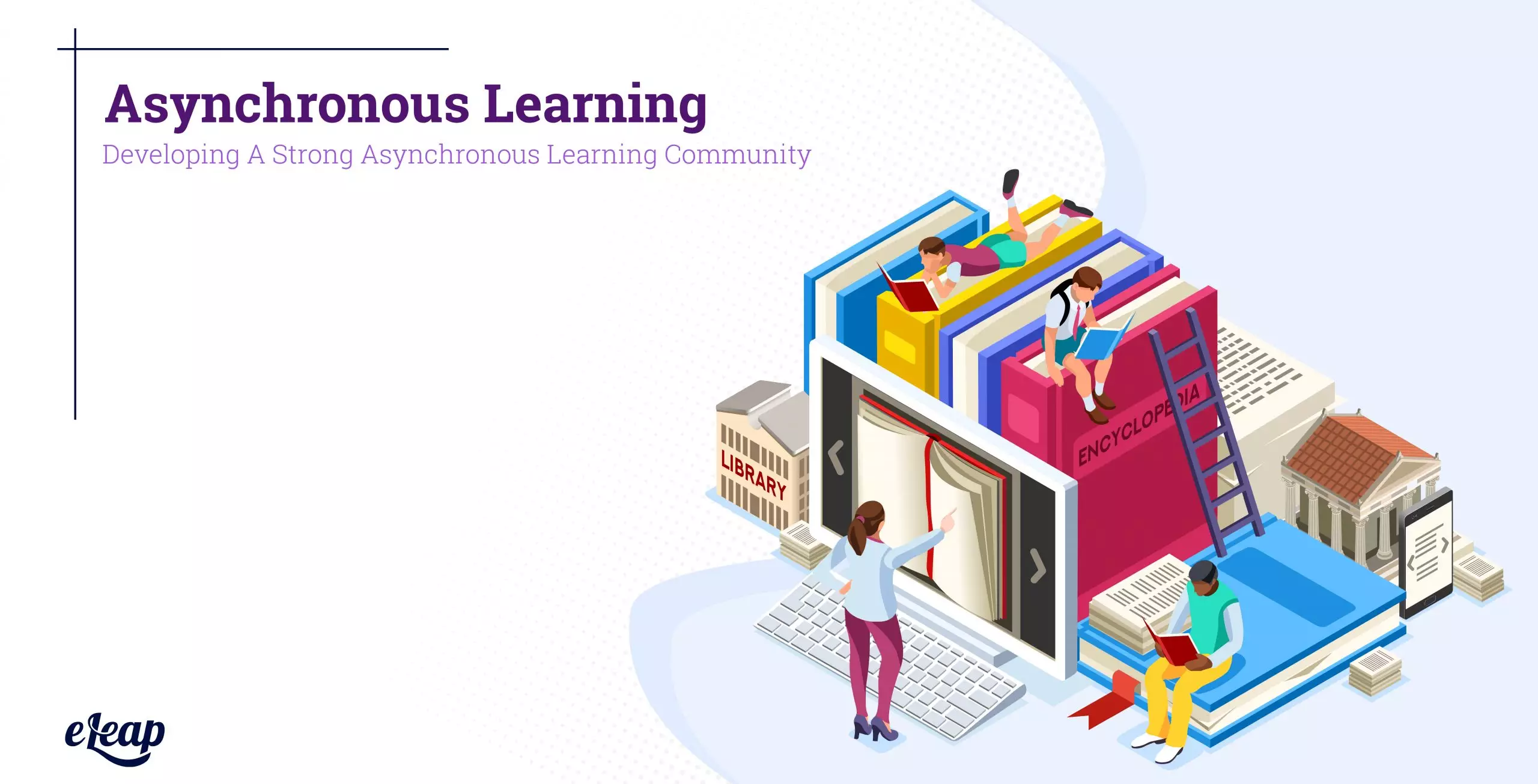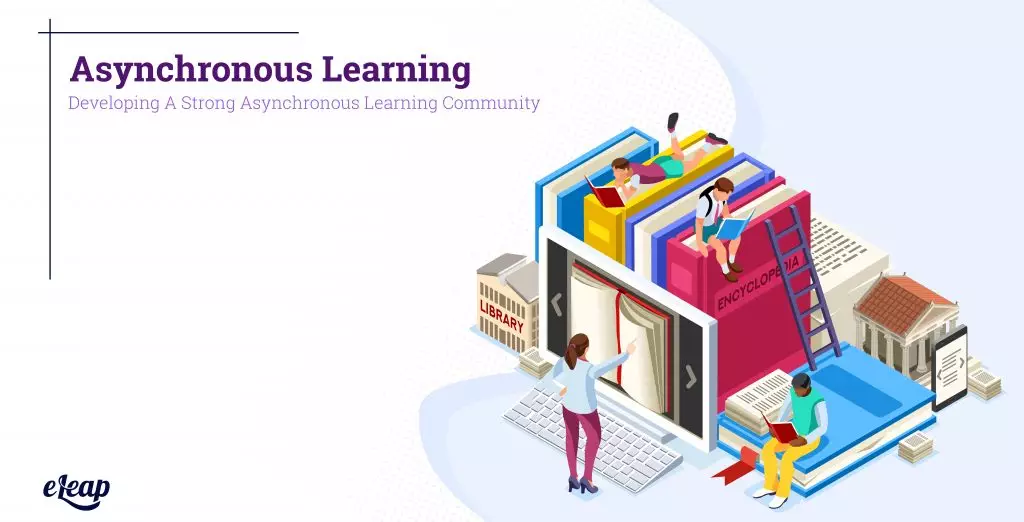Asynchronous Learning
Developing A Strong Asynchronous Learning Community

Do you wish that your students and employees could be constant learners? Wouldn’t you love them to be curious and motivated to learn? Wouldn’t you love to create a collaborative learning environment between peers and coworkers outside of the training room? Wouldn’t you love this access and interaction to be consistently available anywhere, anyhow, at any time?
That is the goal of asynchronous learning – to utilize an online platform that emphasizes peer-to-peer interaction and growth. This online platform encourages shared information between a network of people outside of the traditional constraints of communication. People can share and see ideas when they have the time by just logging on to the portal. They can go on, do their work, and take a break – while their coworkers take a look at that same work from across the globe hours later.
Asynchronous learning is all about continuous, constant, peer-fed learning.

Understanding Asynchronous Learning
The definition of asynchronous is “not simultaneous or concurrent in time” and “digital communication in which there is no timing requirement for transmission.” What this means in terms of training is that people do not be on the training platform at the same time to still communicate and learn from one another.
This can include anything from prerecorded videos to games, or from email exchanges to training discussion boards or forums. This simply means that someone can sit down in front of their computer, tablet, or mobile and start the process of learning. See our list of course packages for asynchronous learning.
Synchronous learning, on the other hand, is live trainings, like webinars, conferences, chat rooms, and lectures. These are useful in their own right as a way for quick interaction.
However, the purpose of asynchronous is not fast skill-building. It’s about collaboration. It tends to be about building a student-centered network of consistent learning. It becomes a platform where students can take control of their own development.
They can choose which videos to watch and which skills to learn, and they can choose how to interact with their peers in discussion boards and pathway exchanges. They can take time to reflect on learning before responding or moving on to the next assignment. They can go at their own pace. They can save and revisit those learnings or ideas later.
Creating an Asynchronous Learning Community
So how do you foster this sort of community of curiosity?
It’s not easy. Even if your company has a quality LMS that offers room for interaction and asynchronous learning doesn’t necessarily mean that your employees will use it. Your HR needs to foster a culture of continuous learning. Here’s how:
- User Pathways
Structuring the online platform the correct way is the first step to ensuring fully functioning asynchronous learning. A facilitator or HR representative should be responsible for creating user pathways and groups for different networks of students. For example, one pathway could be for the San Francisco marketing team and another pathway could be for the global marketing team.
Furthermore, there should be multiple discussion boards for crossover communication from different groups. This can bring groups of workers together and facilitate discussion by categorizing by specific department, location, project, or even task. Discussion boards can also facilitate interdepartmental, international, and interrelational conversations.
- Introductions
Encourage introductions as the first form of communication with the online platform. Ask each person to fill out a small bio about themselves with questions to answer. An example could be:
- Name
- Job Function
- Department
- Goals With Communication
- Favorite Television Show
You want to help people find commonalities between them—both professionally and personally. When they feel more connected with one another on different levels, they will likely want to collaborate and use the online platform more often. They want to know who they are working with and how to approach one another.
- Interactions
Encourage interactions with a facilitator. A facilitator is not necessarily an instructor or teacher; they simply function as a conversation leader and director. They can initiate and stimulate the group’s interaction by asking questions that promote collaboration and creativity. It is also important that the facilitator acknowledges each person’s contribution to the conversation and thanks people for sharing.
At some point, the facilitator will not be necessary any more. As group members grow in their comfort with their interactions, they will start feeding off one another and validating each other’s ideas naturally.
- Culture
The only way that an online platform will work is if there is a company-wide culture of learning. Sometimes, this means having a synchronous learning moment where those members from the online discussions meet in real time. This could be in person, a conference video call, or a webinar.
This is a great way to begin that first facilitation so that asynchronous learning feels less uncomfortable. People can get to know each other before working together and relying on one another’s ideas. Creating a culture of learning outside of the online space will encourage curiosity. This curiosity will seep into the online platform and asynchronous learning space.
Asynchronous learning is a powerful tool that stimulates learning and collaboration using an online platform. People can connect with their coworkers from anywhere, at any time, on any device—outside of the typical constraints of workplace communication. Asynchronous learning communities can boost the productivity, creativity, and growth of teams and individuals toward overall organizational development.